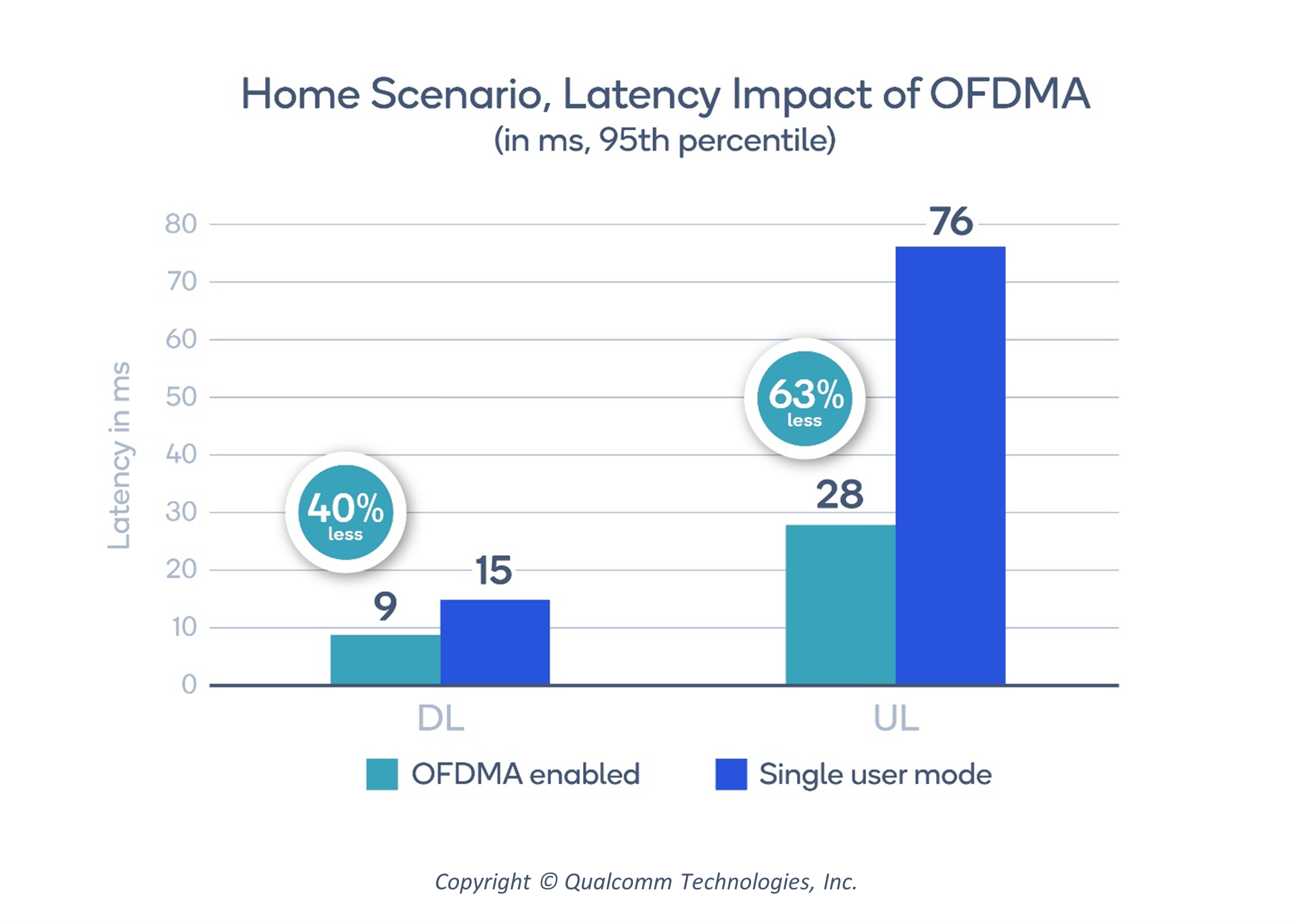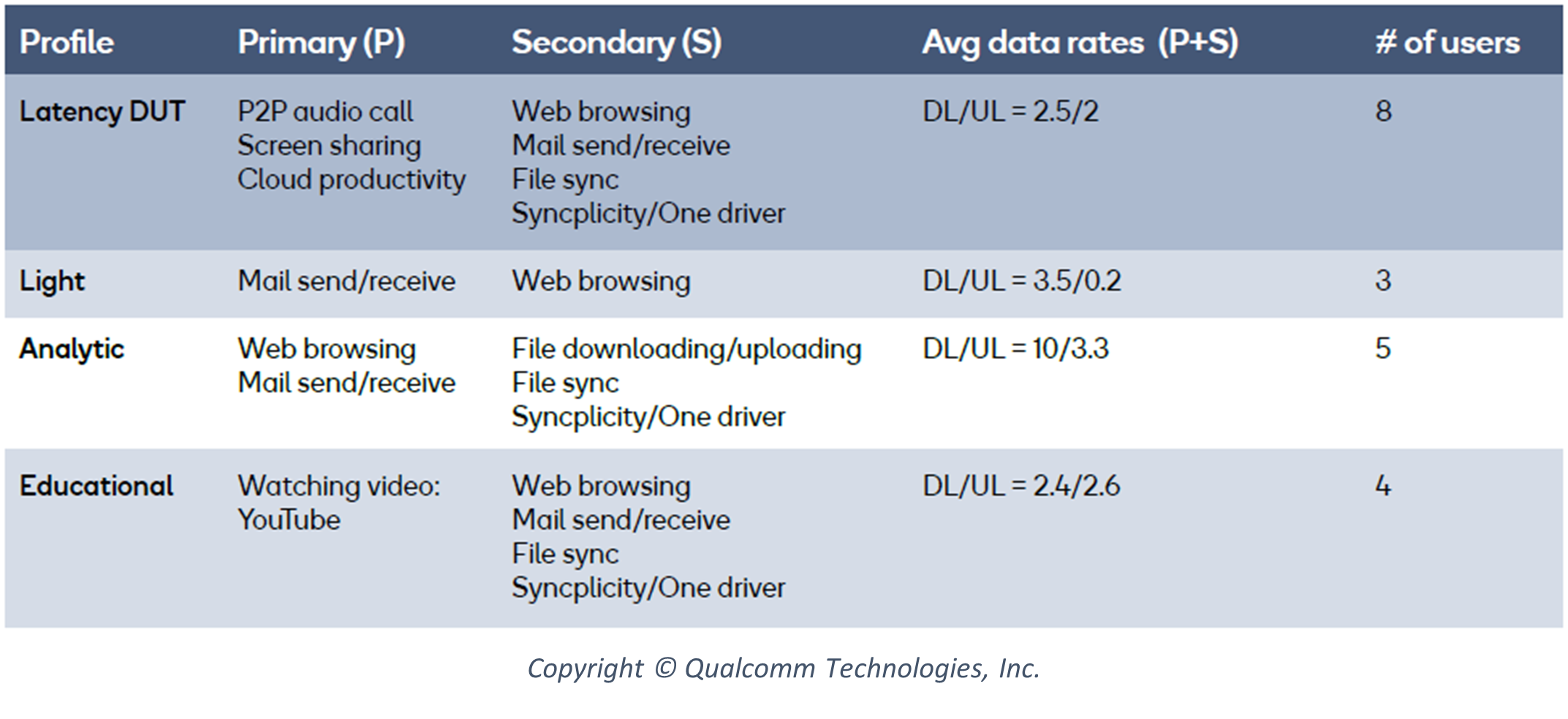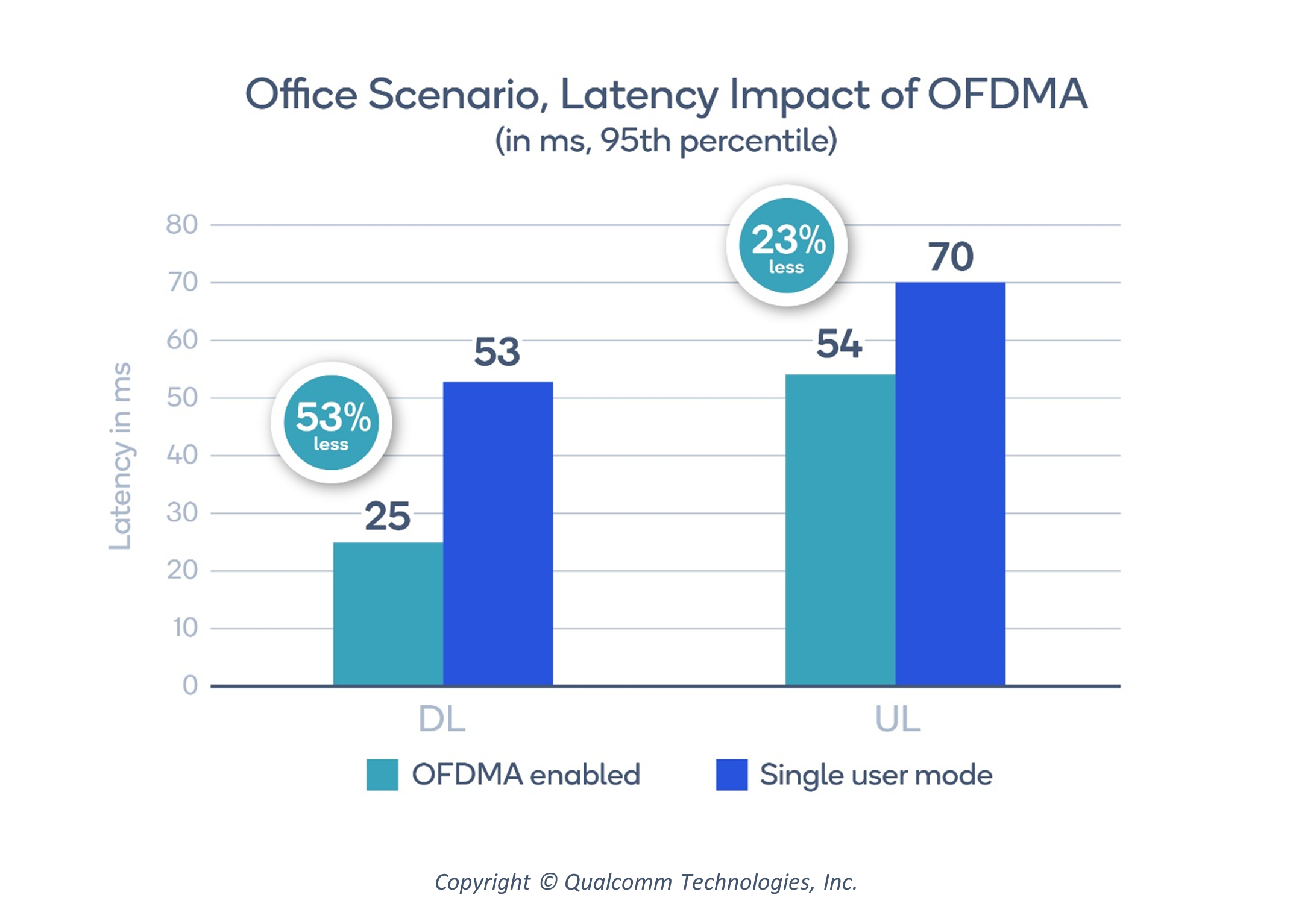Wi-Fi 6 is the latest generation of Wi-Fi®, providing key benefits such as higher data rates, greater network capacity, better power efficiency, and quality performance in remote or congested environments. To deliver these benefits, one of the defining features of today’s first-generation Wi-Fi CERTIFIED 6™ certification program is support for orthogonal frequency division multiple access (OFDMA)1. OFDMA is part of the Wi-Fi 6 standard and requires highly effective scheduling techniques to be delivered in highly congested and complex network deployments.
As a vocal proponent of the full range of these multi-user technologies and scheduling techniques, Qualcomm Technologies, Inc. has conducted an analysis to clearly illuminate the benefits of using OFDMA2. The analyses were performed across a set of real-life, intense-usage network deployments spanning home, enterprise, and classroom scenarios.
OFDMA latency reduction benefits
Reductions in network latencies are some of the major benefits of OFDMA. Latency refers to the time it takes for a packet to go from one network node to another. In the context of Wi-Fi networking, the overall Wi-Fi network latency is comprised of the combination of the downlink latency, or access point (AP) to client, and uplink latency, or client to AP. The latency achieved in practice is highly dependent on the traffic load, the density of the deployment, interference—such as from overlapping Wi-Fi networks—and the quality of the AP scheduler.
For example, testing conducted by Qualcomm Technologies has shown a roundtripping latency of around 2–3 milliseconds (ms) in the case of one AP, one client, and no interference, and less than 4 ms for bidirectional Voice over Internet Protocol (VoIP). Testing in a two-hop, multi-AP network setting has shown bi-directional ping latencies of 4–5 ms.
Home scenario
Due to the COVID-19 pandemic in 2020, home networks have been exercised intensively, with multiple people in a household using the home Wi-Fi network to work, study, play games, and enjoy entertainment. To showcase the latency benefits of OFDMA, a test setup was used with a similarly intense use case scenario. In this home scenario, three family members are engaged in multiplayer gaming, while also being engaged in video communication with the other players.
The busy home scenario we modeled covers:
- 4x high-quality video calls (3 Mbps each)
- 4x multiplayer gaming sessions, each with a 1.5 Mbps downlink video session
- 5x security cameras (3 Mbps)
- 3x people browsing the Internet, with interactive content
In addition, the scenario included the following background traffic:
- 2x file synchronization (6 Mbps UL) (e.g., uploading files)
- 1x email send/receive
- 4x OBSS traffic (50 Mbps) (overlapping networks using the same frequency channel)
In this scenario, the data clearly shows that use of the OFDMA feature set delivers a downlink latency reduction of up to 40% and an uplink latency reduction of up to 63%.
Office scenario
In the OFDMA analyses run by Qualcomm, the office scenario consisted of 20 users with a diverse mix of productivity application use cases, spanning from voice calling and video conferencing to web browsing and email exchanges. The office activity is captured in the following table:
The OFDMA latency reductions in this scenario are captured below. In this office scenario, the data shows that use of the OFDMA feature set delivers a downlink latency reduction of up to 53% and an uplink latency reduction of up to 23%.
Classroom scenario
In the modern 20-person classroom scenario, it quickly becomes clear that a single AP network would prove ineffective without the use of OFDMA. For this classroom scenario, Qualcomm’s analysis included a setup with 19 students and one professor, in addition to background traffic generated by overlapping networks, such as traffic from other classrooms. The setup consisted of the following set of users, applications, and traffic patterns:
- 20x high-definition video conferencing (3Mbps BiDi) AC_VI
- 4x online document editing (cloud productivity) AC_BE
For background traffic we assume:
- 4x email traffic
- 4x web browsing
- 4x messaging
- 2x overlapping networks with 50Mbps of traffic each
The results demonstrate that a network could not operate effectively without the use of OFDMA in this classroom setting. The data shows that use of the OFDMA feature set delivers a downlink latency reduction of up to 93% and an uplink latency reduction of up to an impressive 99%.
Need for high quality scheduling
In the dense deployment environments analyzed, the role of the AP scheduler is critical. The scheduler must be optimized for high-speed decision making determining which data frames from which clients to combine into one transmission—either downlink or uplink.
High performance, high-quality scheduler development is typically achieved through the application of deep networking expertise, and a discipline to continue year-over-year scheduler improvement.
Summary
Through the analysis of a real-world set of scenarios, Qualcomm demonstrated the significant positive impact of using OFDMA to minimize the network latency that customers experience. Specifically, this impact is highly relevant for real-time applications such as gaming and voice/video calling. A key enabler for delivering this impact is the network scheduler which, when expertly implemented, can maximize multi-user technology benefits, such as those delivered by OFDMA.
The statements and opinions by each Wi-Fi Alliance member and those providing comments are theirs alone, and do not reflect the opinions or views of Wi-Fi Alliance or any other member. Wi-Fi Alliance is not responsible for the accuracy of any of the information provided by any member in posting to or commenting on this blog. Concerns should be directed to info@wi-fi.org.








Add new comment